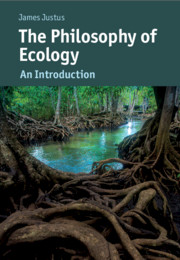Book contents
- The Philosophy of Ecology
- Cambridge Introductions to Philosophy and Biology
- The Philosophy of Ecology
- Copyright page
- Contents
- Figures
- Preface
- Introduction
- 1 The Ecological Niche
- 2 Distinctively Ecological Laws and the Reality of Biological Communities
- 3 The Balance of Nature
- 4 Modeling in Ecology
- 5 Biodiversity
- 6 Progress in Applied Ecology
- 7 Fact and Value in Applied Ecology
- References
- Index
6 - Progress in Applied Ecology
Published online by Cambridge University Press: 28 May 2021
- The Philosophy of Ecology
- Cambridge Introductions to Philosophy and Biology
- The Philosophy of Ecology
- Copyright page
- Contents
- Figures
- Preface
- Introduction
- 1 The Ecological Niche
- 2 Distinctively Ecological Laws and the Reality of Biological Communities
- 3 The Balance of Nature
- 4 Modeling in Ecology
- 5 Biodiversity
- 6 Progress in Applied Ecology
- 7 Fact and Value in Applied Ecology
- References
- Index
Summary
Conservation biology emerged in the 1980s as a rigorous science focused on protecting biodiversity and as a discipline distinct from ecology. Two breakthroughs in information processing made this possible: place-prioritization algorithms and GIS. They provided a defensible, data-driven methodology for designing reserves to conserve biodiversity, obviating the need for largely intuitive and highly problematic appeals to ecological theory to design reserves. They also supplied quantitative, critical assessments of existing reserves; most had been designated on unsystematic, ad hoc grounds and thus poorly represented biodiversity. Demonstrating this convincingly was crucial to ensuring biodiversity would be protected in future policy-making contexts. Despite these unquestionable advances, that they constitute scientific “progress” has recently been criticized. Ecological theory, it is claimed, is required for genuine progress about reserve design; algorithmic innovation in data processing is insufficient. Place-prioritization algorithms are also supposedly less scientifically grounded and produce reserves that poorly protect biodiversity. On all accounts this criticism is indefensible. It involves numerous inaccuracies about the science and relies on an untenable conception of progress for applied sciences with ethical objectives such as conservation biology.
Keywords
- Type
- Chapter
- Information
- The Philosophy of EcologyAn Introduction, pp. 129 - 160Publisher: Cambridge University PressPrint publication year: 2021



